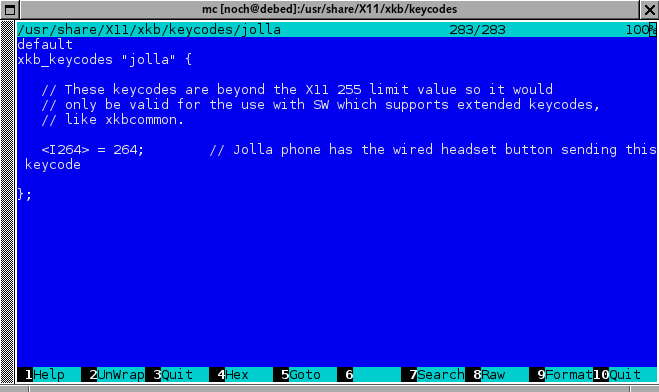and then, i thought, what did we gain with wayland. ok we loose things, but for what?
https://openbenchmarking.org/result/1905024-HV-FEDORA30D09&obr_sgm=y
11 years after the first release, what we have is comparable performance to X.
11 years is a lot of time. you had everything, all corporate resources, political force to push this technology, money to develop, and still, 11 years after the first release - comparable performance.
should i believe to wayland?
#xorg #wayland #benchmark #politics #technology #linux
p. s. if i use wayland + gnome | kde (and those are cpu hoggers, let’s say you cannot deal with audio + gnome/kde, gentoo-studio recommends and ships by default xfce, but even xfce is too heavy for me) then i loose speed anyway, because gnome/kde.
and if the speed of xorg vs wayland is comparable, then windowmaker on xorg is faster than gnome on wayland.
p. p. s. phoronix has to remove ‘php’ letters from its url apis, to be free to change underlying php and get rid of it.
The Wayland architecture integrates the display server, window manager and compositor into one process. You can think of Wayland as a toolkit for creating clients and compositors. It is not a specific single compositor or window manager. If you want a different window manager, you can write a new one.
I don’t know much about Wayland but the immediate question is: Why would you want to do that? If Wayland has it’s own window manager built in why do you need another one? It’s like support for Windows or OS X. Not needed as those systems have their own window managers and not really support replacing it. This is contrary to X which has no window manager by default and allows and encourages others to implement it. Window Maker is a window manager for X (as stated in the info box) and Wayland aims to be an incompatible replacement of X. So they are not really a good match at first sight.
now, they say - use wayland, it’s a new and good thing. this is a dealbreaker for me. i can’t live without windowmaker.
also, says
If Wayland has it’s own window manager built in why do you need another one?
wait, how? seriously? if there’s a one brand of bread, why would you need another one?
this is centralization again.
#quote #technology #wayland #xorg #linux #unix #windowmaker #design

wow. xkb? doesn’t xkb work only for X? wayland has it’s own keyboard mappings.
#jolla #xkb #wayland #x11 #keyboard

just met Jan Wildeboer at #evn #zvartnots #airport w/@{անկապ ; ach94er@spyurk.am}. he’s a #redhat guy. #free-software evangelist. we are really excited to have him at our event.
already discussed #wayland vs #xorg and other political and technical questions. (: i’ve heard some very interesting stories.
#barcampevn17 #barcampevn #yerevan
@{Antranig Vartanian ; antranigv@spyurk.am}, i guess you might enjoy some debates with him. (: @{utopianlab* ; utopeanlab@spyurk.am} he’s Dutch, you know. (:
and he makes nice comments
@{ Նորայր ; norayr@spyurk.am} 12/24/2014, 5:55:38 PM
Նորայր ; norayr@spyurk.am} 12/24/2014, 5:55:38 PM
շատ հաւս մեկնաբանութիւններ է անում՝ https://www.youtube.com/watch?v=5pOxlazS3zs
#լինուքս
#Bryan-Lunduke #linux #speech #ubuntu #fedora #elementary #gnome #mate #cinnamon #wayland #x11 #mir #arch #openssl
So what I understand is that #Wayland just simply transfer bitmaps via #network, like #vnc does. On the other hand, #Xorg transfers some commands to draw primitives, and those primitives are drawed by another Xorg. This is the difference, right? Then, the question is - is it good or not? I mean is it a good design? What it gives us? That we cannot redraw primitives other way, for example. Like we cannot change our X to draw circles instead of rectangles. On the opposite, the same is bad: I cannot draw it a little differently. I cannot redefine primitives. Probably, I cannot use other X font server, as I can in case of X.